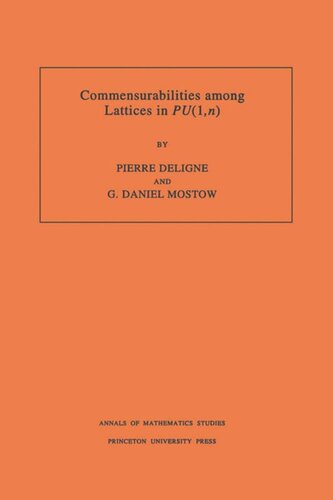

Most ebook files are in PDF format, so you can easily read them using various software such as Foxit Reader or directly on the Google Chrome browser.
Some ebook files are released by publishers in other formats such as .awz, .mobi, .epub, .fb2, etc. You may need to install specific software to read these formats on mobile/PC, such as Calibre.
Please read the tutorial at this link: https://ebookbell.com/faq
We offer FREE conversion to the popular formats you request; however, this may take some time. Therefore, right after payment, please email us, and we will try to provide the service as quickly as possible.
For some exceptional file formats or broken links (if any), please refrain from opening any disputes. Instead, email us first, and we will try to assist within a maximum of 6 hours.
EbookBell Team

0.0
0 reviewsThe first part of this monograph is devoted to a characterization of hypergeometric-like functions, that is, twists of hypergeometric functions in n-variables. These are treated as an (n+1) dimensional vector space of multivalued locally holomorphic functions defined on the space of n+3 tuples of distinct points on the projective line P modulo, the diagonal section of Auto P=m. For n=1, the characterization may be regarded as a generalization of Riemann's classical theorem characterizing hypergeometric functions by their exponents at three singular points.
This characterization permits the authors to compare monodromy groups corresponding to different parameters and to prove commensurability modulo inner automorphisms of PU(1,n).
The book includes an investigation of elliptic and parabolic monodromy groups, as well as hyperbolic monodromy groups. The former play a role in the proof that a surprising number of lattices in PU(1,2) constructed as the fundamental groups of compact complex surfaces with constant holomorphic curvature are in fact conjugate to projective monodromy groups of hypergeometric functions. The characterization of hypergeometric-like functions by their exponents at the divisors "at infinity" permits one to prove generalizations in n-variables of the Kummer identities for n-1 involving quadratic and cubic changes of the variable.